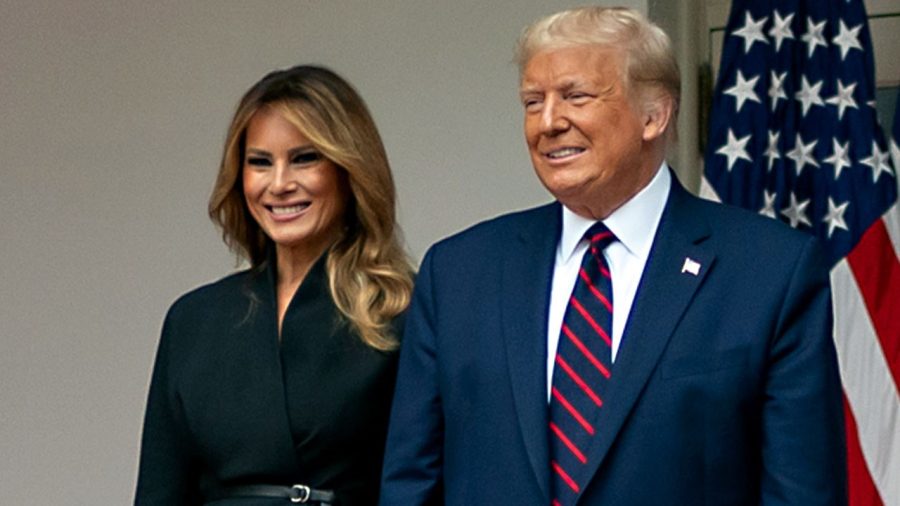The president and first lady test positive for COVID-19
The White House / Andrea Hanks
President Donald Trump announced early Friday he and first lady Melania Trump had tested positive for Covid-19.
October 2, 2020
CNN) — President Donald Trump announced early Friday he and first lady Melania Trump had tested positive for Covid-19.
His announcement came just hours after news that Hope Hicks, one of the President’s closest aides, also tested positive. Hicks had traveled with Trump multiple times recently and was seen this week with several other of the President’s aides — none of whom wore masks.
“This is very concerning,” says Anne Rimoin, an epidemiology professor at UCLA. “The number of people that could potentially be exposed and at risk of contracting this virus is significant here.”
There are many questions going forward — including who else may have been exposed to the virus and what the President and the first lady will need to do now.
Here’s what the US Centers for Disease Control and Prevention says should happen when someone tests positive for the virus or is exposed to an infected individual.
If you test positive for Covid-19
People who have tested positive for Covid-19 need to go into isolation, according to guidance from the CDC updated in August.
Those in isolation should stay home, unless they need to get medical care, and monitor their symptoms, according to the agency.
According to a statement from Trump’s physician, both the President and the First Lady plan to remain in the White House as they recover while a medical team keeps a “vigilant watch” on them.
Navy Commander Dr. Sean Conley said he expects Trump to “continue carrying out his duties without disruption while recovering.”
According to the CDC, infected individuals should separate themselves from others and stay in a separate room from other household members, if possible, and use a separate bathroom.
“Don’t share personal household items like cups, towels, and utensils,” the agency said. “Wear a mask when around other people, if you are able to.”
Those infected should wear masks covering their nose and mouth when they’re around others, the CDC said.
When can you leave isolation
The CDC recommends people who tested positive for Covid-19 should stay isolated for at least 10 days since symptoms first appeared and after they’ve been at least 24 hours fever-less without the help of medications. Symptoms should also be improving before people leave isolation, the CDC said.
For those who tested positive but showed no symptoms, the agency said they can be around others after 10 days since their last positive Covid-19 test.
People who are severely immunocompromised, according to the CDC, may require testing before interacting with others.
Who may have been exposed
According to the CDC, an infected person can spread the virus starting 48 hours before the person has any symptoms or tests positive.
“By letting your close contacts know they may have been exposed to COVID-19, you are helping to protect everyone,” the agency said.
The CDC says close contacts can include:
- Anyone who was within six feet of an infected individual for at least 15 minutes
- Anyone who cared for someone who was infected or had direct physical contact, like hugging or kissing
- Anyone who shared eating or drinking utensils
- Anyone who may have gotten respiratory droplets from an infected individual through something like a sneeze or a cough
What to do if you’re exposed
People who had close contact with someone with Covid-19 should stay home for 14 days after they were last exposed to that person, the CDC says.
Individuals don’t have to quarantine for two weeks if they’ve been infected in the previous three months and recovered without lingering symptoms, the agency said.
The-CNN-Wire
™ & © 2020 Cable News Network, Inc., a WarnerMedia Company. All rights reserved.













